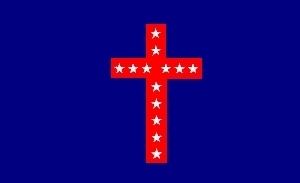Active 1861 – 1865 | Size Brigade | |
 | ||
Branch Mix of infantry, cavalry, and artillery Engagements American Civil WarBattle of ShilohDefense of VicksburgBattle of Stones RiverSiege of JacksonBattle of ChickamaugaAtlanta CampaignBattle of StockbridgeBattle of Oconee River BridgeCarolinas Campaign | ||
The Orphan Brigade was the nickname of the First Kentucky Brigade, a group of military units recruited from the Commonwealth of Kentucky to fight for the Confederate States of America during the American Civil War. The brigade was the largest Confederate unit to be recruited from Kentucky during the war. Its original commander was Major General John C. Breckinridge, former Vice President of the United States and candidate for President, who was enormously popular with Kentuckians.
Contents
- History
- Weapons
- The original units of the Orphan Brigade
- Other units that joined the Orphan Brigade
- Formally in but not directly serving with
- Notable members
- References

History
The regiments that were part of the Orphan Brigade were the 2nd, 3rd, 4th, 5th, 6th, and 9th Kentucky Infantry Regiments. Units of the Orphan Brigade were involved in many military engagements in the American South during the war, including the Battle of Shiloh. In 1862, Breckinridge was promoted to division command and was succeeded in the brigade by Brig. Gen. Roger W. Hanson. At the Battle of Stones River, the brigade suffered heavy casualties in an assault on January 2, 1863, including General Hanson. Breckinridge—who vehemently disputed the order to charge with the army's commander, General Braxton Bragg—rode among the survivors, crying out repeatedly, "My poor Orphans! My poor Orphans," noted brigade historian Ed Porter Thompson, who used the term in his 1868 history of the unit. The name came from how the Confederacy viewed its soldiers from Kentucky (which remained in the Union, but was represented by a star in both countries' flags). The term was not in widespread use during the war, but it became popular afterwards among the veterans.
The Orphan Brigade lost another commander at the Battle of Chickamauga, when Benjamin Hardin Helm, Abraham Lincoln's brother-in-law, was mortally wounded on September 20, 1863, and died the following day. Major Rice E. Graves, the artillery commander, was also mortally wounded.

The Orphan Brigade served throughout the Atlanta Campaign of 1864, then were converted to mounted infantry and opposed Sherman's March to the Sea. They ended the war fighting in South Carolina in late April 1865, and surrendered at Washington, Georgia, on May 6–7, 1865.
Weapons
When the Orphan Brigade was mustered into service, weapons were in short supply. The troops were armed with old smoothbore muskets (some flintlock and others percussion) along with shotguns and hunting rifles(Hawkens). They were given a bounty if they brought their own rifle. Some men had no arms at all. Only a week before the Battle of Shiloh, every regiment except the 9th Kentucky was issued a supply of Enfield rifles imported from England (the 9th armed themselves with Enfields captured during the battle).
From that point onward, most of the Orphan Brigade carried the long three-band Model 1853 Enfield rifle. When the unit surrendered in March 1865, some men were still carrying the same rifles they'd had since Shiloh.
